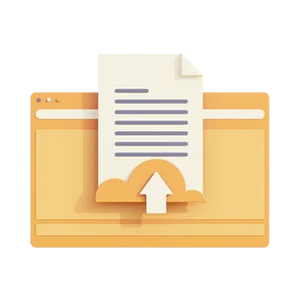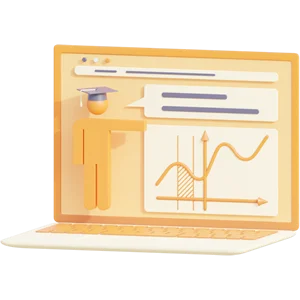Studiebot antwoord
Stel een vraag ›Make a practice exam of the following text: Doing history:
Historical sources
and their repositories
Unit 5
Historical sources
Historians are always searching for answers
about the past and must use many sources to find
answers.
Answers are found in sources which fall into two
broad categories
Historical sources
Primary
sources
Secondary
sources
Primary sources
A primary is the testimony of an eyewitnesswho
was present at the events of which he tells
(Gottscalk, 1968:53).
A primary source must have been produced by a
contemporary of the events it narrates.
Oral interviews with war veterans or survivors of a
genocide are also considered primary sources
Primary sources
Written/ textual
Pictorial
oral
Primary sources
Written/ textual
Autobiographies
Dairies,
letters,
speeches,
official records,
Birth and death
certificates
Newspaper
accounts/articles/reports
Magazine articles
Marriage certificate
Pictorial
Photographs
Works of art
Video footage
Newspaper
Posters
Political cartoon
Maps
Magazines
Objects
Artifacts
Rock art sites
Maps
Coins
Pros and cons of primary sources
Pros
original/ authentic (firsthand
information)
Opportunity to develop your own
interpretation
Primary sources allow you to get closer
to the thoughts and lives of the people
you are studying
Historical perspective
Better understanding of cause and
consequences
Cons
Must establish authenticity of document
Primary sources can lie on purpose by
omitting certain things to further specific
ideology
Primary sources can mislead unintentionally
because facts are incomplete or incorrect
Many primary sources are biased, either
consciously or unconsciously
May be difficult to get a hold of
May be costly to get a hold of
Oral history
Dont confuse oral history with oral tradition.
Oral history is recording of historical information through interviews using either
audio or video recording.
Interviews are carried out with people who were participants or eyewitness to a
particular event
Pros
Way to record information left out of other records, un-silencing the
silent histories
Way for common people to have their stories told (history from below)
Interviewers not only ask what happened but how individuals feel
about what happened
Allows historians to compare what the subject said to existing material
(sometimes this new information may support or contradict written
record).
Audio: Reveal unique speech characteristic and tone that could not be
captured in other sources.
Video: informants physical appearance, age, comfortability etc can be
seen.
Can take place anywhere at anytime, in any language
Cons
Trust may be issue. Interviewer may be
regarded as an outsider.
Oral historians cannot ignore issues such
as:
Race and ethnicity
class and social standing
gender
and culture as a divide when conducting
interviews
Some events told repeatedly therefore
informant remembers them as their own
Informants may have also read up on the
event
Experiences in the present might
influence accounts of the past
Age of informant at time of interview may
affect information.
Traumatic experiences can be forgotten or
hidden. E.g. acts such as killing, sabotage
are often left out
Informant may tell researcher what they
think research wants to hear
interviewer may influence the subject
time consuming spending an extended
amount of time with one respondent
Interviews can be costly if the interviewer
has to pay travel to destination of the
informant
Language barrier, using interpreters may
distort information
Secondary sources
A secondary source is the testimony of anyone who is not a witness at the events of which they
tell about (Gottscalk, 1968:53).
.
Authors of secondary sources typically base their research on information gathered from
various primary sources.
Secondary sources
Pros
Fastest ways to learn about a certain event. Provide
more context and meaning.
Interpretation done for you
Provide multiple points of view
Secondary sources can direct you primary sources
Since secondary sources aim to expand on primary
sources,
Easy to access. Internet has changed the way
secondary research works
Low cost or free.
Allows you to compare data over time
Richest type of data available
Cons
Sometimes no new evidence is presented
Secondary sources may contradict one another
(same primary sources used but interpreted
differently)
Time consuming as you must read widely to
identify which facts are constant
Secondary sources be biased
How to find sources
after choosing your topic, you need to find information that will enable you to
answer the question
Where can you find sources?
Archive vs library
Library
acquire and provide access to published knowledge.
Mostly secondary sources
Mostly published materials held by other libraries
and individuals
Material can be replaced
Books can be found on shelves cataloged by subject
Books can be borrowed
Archive
Archives preserve original records made by
individuals, organizations and government
deemed to be of lasting value
Mostly primary sources
Materials in the archives are unique and
irreplaceable
Archive records are fragile and information they
contained is valuable therefore restrict rules for
using e.g. wearing gloves
Materials kept in conditions to minimize
deterioration
Material may not be borrowed. The practice exam must be written in theEnglish language. Below are the answers. The number of questions that the practice exam must contain is unlimited.
Stel een studievraag en wij proberen hem zo goed mogelijk te beantwoorden.
Stel een vraagEen studievraag stellen?
Stel een studievraag en wij proberen hem zo goed mogelijk te beantwoorden.
Stel een vraag Actie: ontvang 10% korting bij aankoop van 3 of meer items!
Actie: ontvang 10% korting bij aankoop van 3 of meer items!
Actie: ontvang 10% korting bij aankoop van 3 of meer items!







